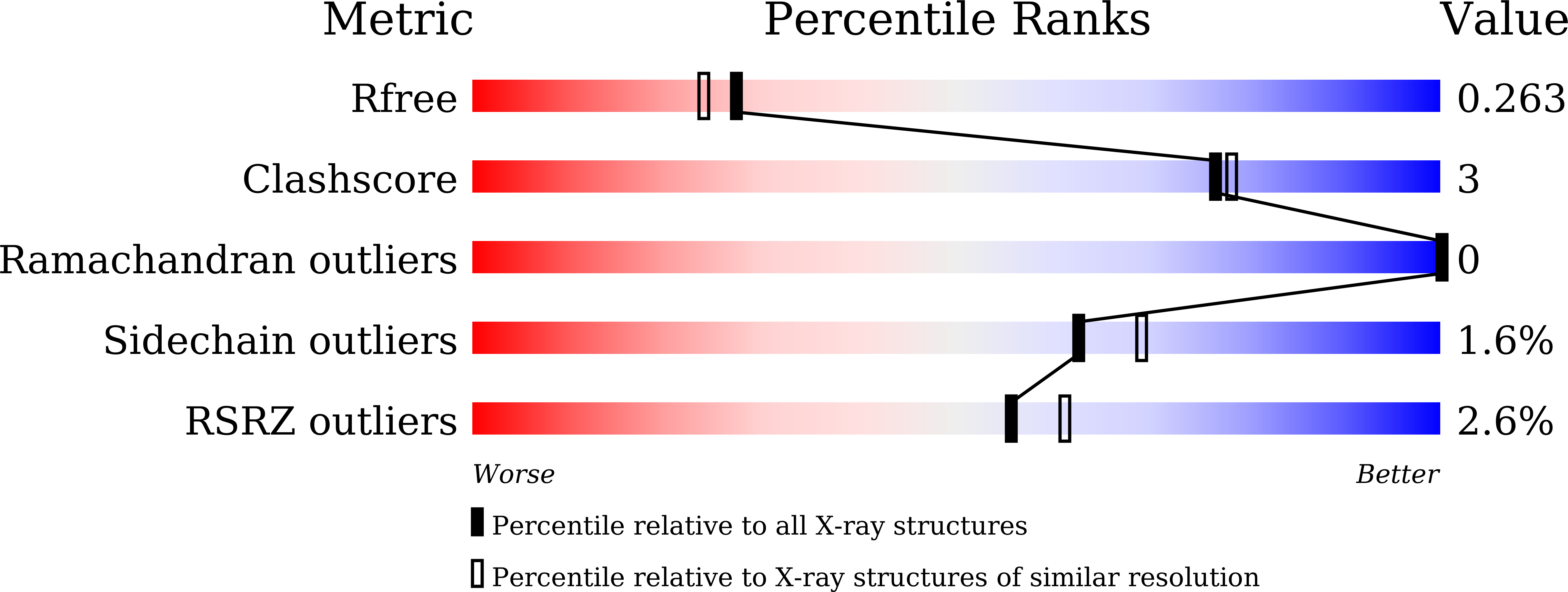An Isoform-Selective Modulator of Cryptochrome 1 Regulates Circadian Rhythms in Mammals.
Miller, S., Aikawa, Y., Sugiyama, A., Nagai, Y., Hara, A., Oshima, T., Amaike, K., Kay, S.A., Itami, K., Hirota, T.(2020) Cell Chem Biol 27: 1192-1198.e5
- PubMed: 32502390
- DOI: https://doi.org/10.1016/j.chembiol.2020.05.008
- Primary Citation of Related Structures:
6LUE - PubMed Abstract:
Cryptochrome 1 (CRY1) and CRY2 are core regulators of the circadian clock, and the development of isoform-selective modulators is important for the elucidation of their redundant and distinct functions. Here, we report the identification and functional characterization of a small-molecule modulator of the mammalian circadian clock that selectively controls CRY1. Cell-based circadian chemical screening identified a thienopyrimidine derivative KL201 that lengthened the period of circadian rhythms in cells and tissues. Functional assays revealed stabilization of CRY1 but not CRY2 by KL201. A structure-activity relationship study of KL201 derivatives in combination with X-ray crystallography of the CRY1-KL201 complex uncovered critical sites and interactions required for CRY1 regulation. KL201 bound to CRY1 in overlap with FBXL3, a subunit of ubiquitin ligase complex, and the effect of KL201 was blunted by knockdown of FBXL3. KL201 will facilitate isoform-selective regulation of CRY1 to accelerate chronobiology research and therapeutics against clock-related diseases.
Organizational Affiliation:
Institute of Transformative Bio-Molecules, Nagoya University, Nagoya 464-8601, Japan.















